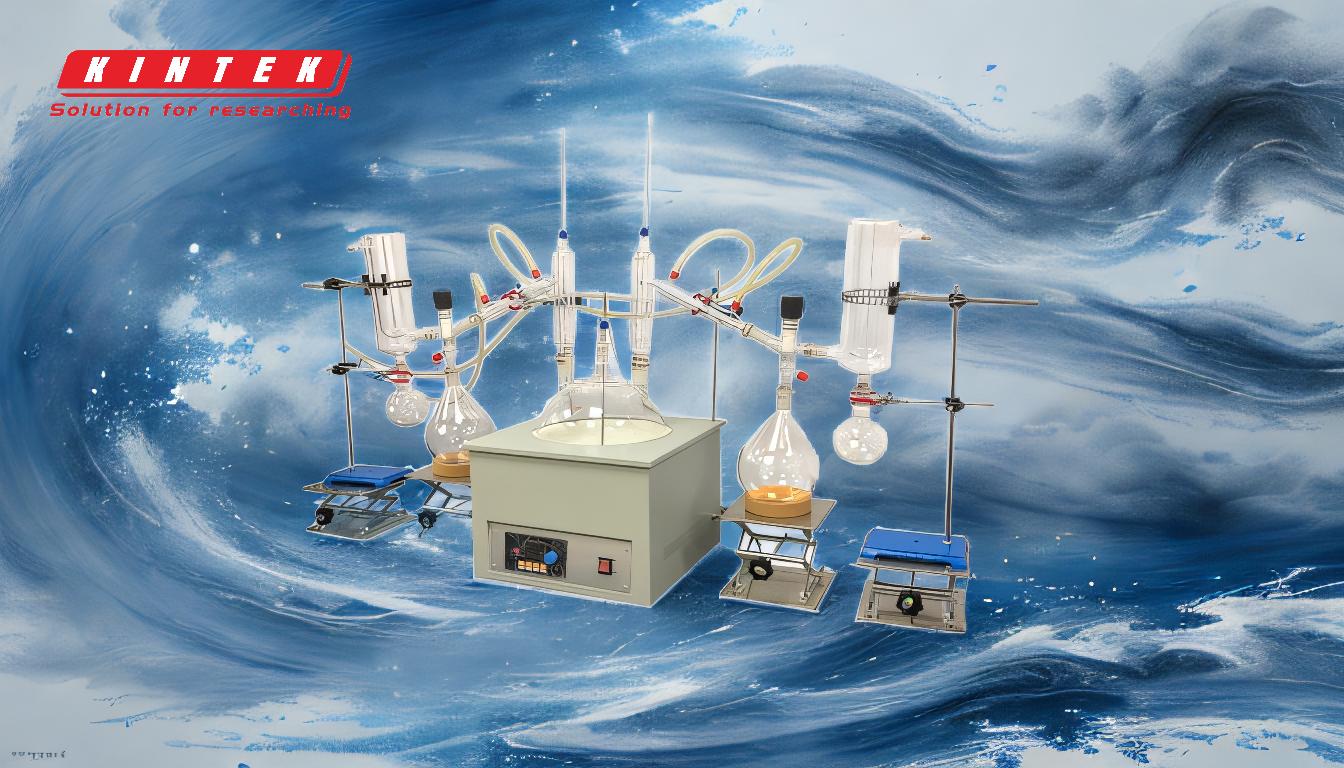Short path distillation and fractional distillation are both techniques used for separating and purifying compounds, but they are not the same. Short path distillation is a specialized form of distillation that operates under reduced pressure, allowing for the separation of compounds with lower boiling points and minimal thermal degradation. It is particularly useful for heat-sensitive materials and can achieve high purity levels in a compact setup. Fractional distillation, on the other hand, is a broader technique that separates components based on their boiling points using a fractionating column, allowing for the separation of multiple components in a mixture. While short path distillation can be used for fractional distillation when multiple receivers are employed, it is not inherently the same as fractional distillation. The key differences lie in their operational principles, equipment requirements, and applications.
Key Points Explained:

-
Operational Principles:
- Short Path Distillation: Operates under reduced pressure, which lowers the boiling points of compounds and minimizes thermal degradation. It involves a short distance for vapor travel, reducing the risk of contamination and improving efficiency.
- Fractional Distillation: Uses a fractionating column to separate components based on their boiling points. The column provides multiple vaporization-condensation cycles, allowing for the separation of components with closer boiling points.
-
Equipment and Setup:
- Short Path Distillation: Requires a compact setup with a feed vessel, heating mantle, vacuum system, and fractionating tube. The equipment is smaller and more suited for laboratory applications.
- Fractional Distillation: Typically involves larger equipment, including a fractionating column, which can be several meters tall, and multiple collection flasks. This setup is more common in industrial applications.
-
Pressure and Temperature Control:
- Short Path Distillation: Operates at low pressure, which allows for lower temperatures and faster distillation times. This is particularly beneficial for heat-sensitive compounds.
- Fractional Distillation: Can operate at atmospheric or reduced pressure but generally requires more precise temperature control to separate components with similar boiling points.
-
Applications:
- Short Path Distillation: Ideal for purifying heat-sensitive materials, such as essential oils, cannabinoids, and other organic compounds. It is also used in laboratories where space and efficiency are critical.
- Fractional Distillation: Commonly used in industries like petroleum refining, chemical manufacturing, and beverage production to separate complex mixtures into their individual components.
-
Efficiency and Purity:
- Short Path Distillation: Can achieve high purity levels (up to 99%) in a shorter time due to the reduced pressure and short vapor path. It is also more efficient in terms of energy consumption.
- Fractional Distillation: While it can achieve high purity, it may require more time and energy, especially when separating components with very close boiling points.
-
Versatility:
- Short Path Distillation: Can be adapted for fractional distillation by using multiple receivers, but it is inherently designed for simpler separations.
- Fractional Distillation: More versatile in handling complex mixtures with multiple components, making it suitable for a wider range of industrial applications.
In summary, while short path distillation and fractional distillation share some similarities, they are distinct techniques with different operational principles, equipment requirements, and applications. Short path distillation is more suited for laboratory-scale purification of heat-sensitive materials, whereas fractional distillation is better for industrial-scale separation of complex mixtures.
Summary Table:
| Aspect | Short Path Distillation | Fractional Distillation |
|---|---|---|
| Operational Principles | Operates under reduced pressure, short vapor path | Uses fractionating column for multiple separations |
| Equipment | Compact setup, lab-friendly | Larger setup, industrial-scale |
| Pressure/Temperature | Low pressure, lower temperatures | Atmospheric/reduced pressure, precise control |
| Applications | Heat-sensitive materials, lab use | Petroleum, chemical, beverage industries |
| Efficiency/Purity | High purity (up to 99%), energy-efficient | High purity, but slower and more energy-intensive |
| Versatility | Simpler separations, adaptable to fractional use | Handles complex mixtures, industrial versatility |
Need help choosing the right distillation method for your needs? Contact our experts today!














